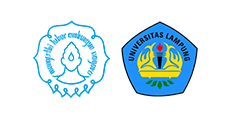The Flipped Classroom in 21st Century Learning for Development of learning skills Algorithm Analysis of Basic Programming C Language
Abstract
Full Text:
PDFReferences
Supatta Outamung. (2015). Flipped Classroom : a dream come true in teaching thai language Journal of Education Faculty of Education Srinakharinwirot University : Vol. 16 No. 1 (January - June 2015).
Nichapa Bureekarn and Assoc.Prof. Aimutcha Wattanaburanon, Ed.D. (2016). Effects of health education learning management using the flipped classroom approach on responsibility and learning achievement of lower secondary school. An Online Journal of Education OJED, Vol.9, No.4, 2014, pp. 253-267.
Piyawadee Pongsawat and Namon Jeerungsuwan. (2015). The Instruction Design Flipped Classroom Model by Using WebQuest Activities to DevelopLearning Skills in The 21st Century for Students in Higher Education. Technical Education Journal King Mongkut’s University of Technology North Bangkok Vol. 6, No. 1, (January - June 2015).
Chanakan Sojayapan and Assoc. Prof. Jintavee Khlaisang, Ph.D., (2016). Development of a flipped classroom model with the online learning group investigation method to enhance teamlearning ability of upper. Vol. 11 No. 2 (April- June 2016).
Apatcha Changkwanyeun and Tipparat Sittiwong. (2015). The Flipped Classroom and Project Based Learning on the Introduction to Computer Information Science for Undergraduate Students. Department of Educational Technology and Communications, Faculty of Education, Naresuan Universit, Mueang Phitsanulok. Naresuan Research 12: Research and Innovation with Country Development.
Patita Piyasakunsevee. (2016). Learning Management on Flipped Classroom. About our community. History Grade 2 students in Assumption Convent Silom School academic year 2016. Journal of Technical Education Rajamangala University of Technology Thanyaburi. Vol.4, No. 1, (Jan.-Jun., 2016). ISSN 2350-9732.
Pimprapa Phanphai and Nattaphon Rampai. (2013). The social media utilization with the flipped classroom theory on language for communication to enhance learning achievement of prathomsuksa 6 students, Journal flipped classroom of Sripatum University, Chonburi.
Korawan seusom and Nopparat meeplat. (2017). The Development of a Flipped classroom with the Integration of Multimedia Classroom Teaching through Google Classroom ,Computer education Faculty of Education Nakhon Si Thammarat Rajabhat University: Vol. 6 ,No. 2 (July - December 2017).
Suthep Phaetchanla .(2011). The Learning Achivement and satisfication of mathayomsuksa iv on topic “Homeostasis” by problem-based learning, science education graduate shool khon kaen university.
Wanchalerm Udomthawee.(2013). The development of integrative thinking and learning achievement of grade 9 students on north and sounth America geography using problem-based leaning and flipped classroom technique. Faculty of Education khon kaen university.
Vijan Panich.(2008). Teacher for Student : Flipped Classroom. Second Printing. Bangkok : Siam Comercial Foundation.
Cherntawan Suwanpanit.(2013). Flipped Classroom respond to new ideas. Retrieved March 15, 2018, From http://www.taamkru.com/th
Trilling, B. & Fadel, C. (2009). Learning and Innovation Skills. 21st Century Skills Learning for Life In Our Times. San Francisco: Jossey-Bass.
Larsen,J. A. (2013). Experiencing a Flipped Mathematics Class.the Secondary Mathematics Education Program Faculty of Education. Simon Fraser University.
Long, T.,Su, C. and Waugh, M.(2013). Using A Flipped-Classroom Instructional Model in A Large-Enrollment Undergraduate Genetics Class: An Action Research Study. Knoxville. The University of Tennessee-Knoxville.The Annual Convention of the Association for Educational Communications and Technology. 1 (1), 109-116.













